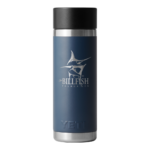
On June 26, 2013 the Bureau of Safety and Environmental Enforcement (BSEE) revised their policy for evaluating proposals to convert obsolete, offshore oil and gas production platforms into artificial reefs rather than require companies to remove them in accordance with the ‘Idle Iron’ requirements. These federal regulations require offshore oil and gas operators to seal wells that are no longer producing and remove any associated infrastructure associated with the production platform…removing fish habitats for many of the Gulf of Mexico’s most sought after game fish.
BSEE’ s new policy will allow companies to avoid the removal process by making their rig part of the ‘Rigs to Reef’ program to enhance a state’s artificial reef program . Once all hazardous materials have been removed from the platform and depending upon the location and the bottom characteristics, the rigs can either be reefed in place or towed to a designated reefing area.
The new policy also supports and encourages the use of obsolete oil and gas structures as artificial reefs and provides greater opportunities for reefing by reducing the five-mile buffer zone between reefing areas to two miles. The policy also provides for extensions to regulatory decommissioning deadlines for companies actively pursuing a “Rigs to Reefs” proposal.
Oil rigs in the Gulf of Mexico provide productive fishing grounds for recreational fishermen and popular dive sites for divers. Removing them as a result of the ‘Idle Iron’ regulations not only has detrimental impacts on fish habitat, but reduces the potential fishing locations in the Gulf of Mexico. The revised policy surrounding the ‘Rigs to Reef’ program will truly benefit both the recreational fishing and diving industries in the Gulf of Mexico.
To read BSEE’s new ‘Rigs to Reef’ Policy, Click Here






